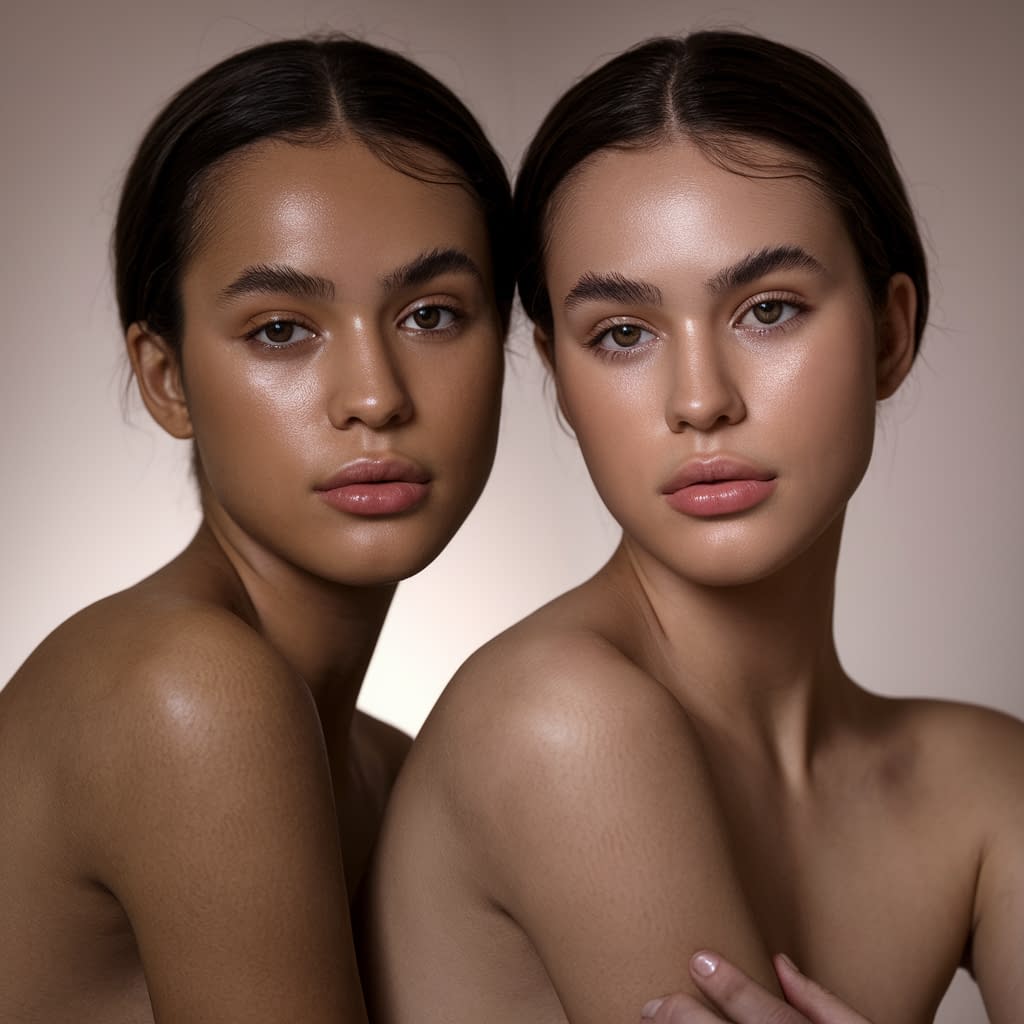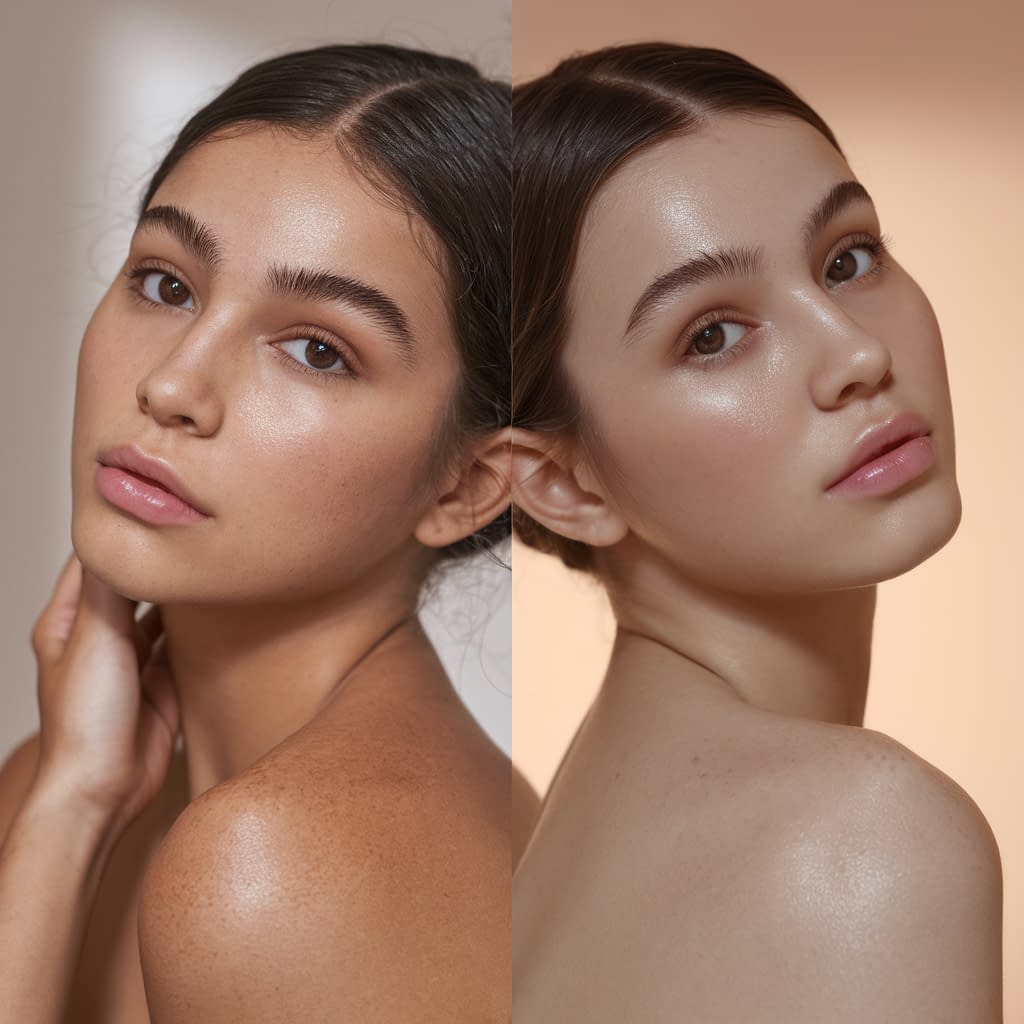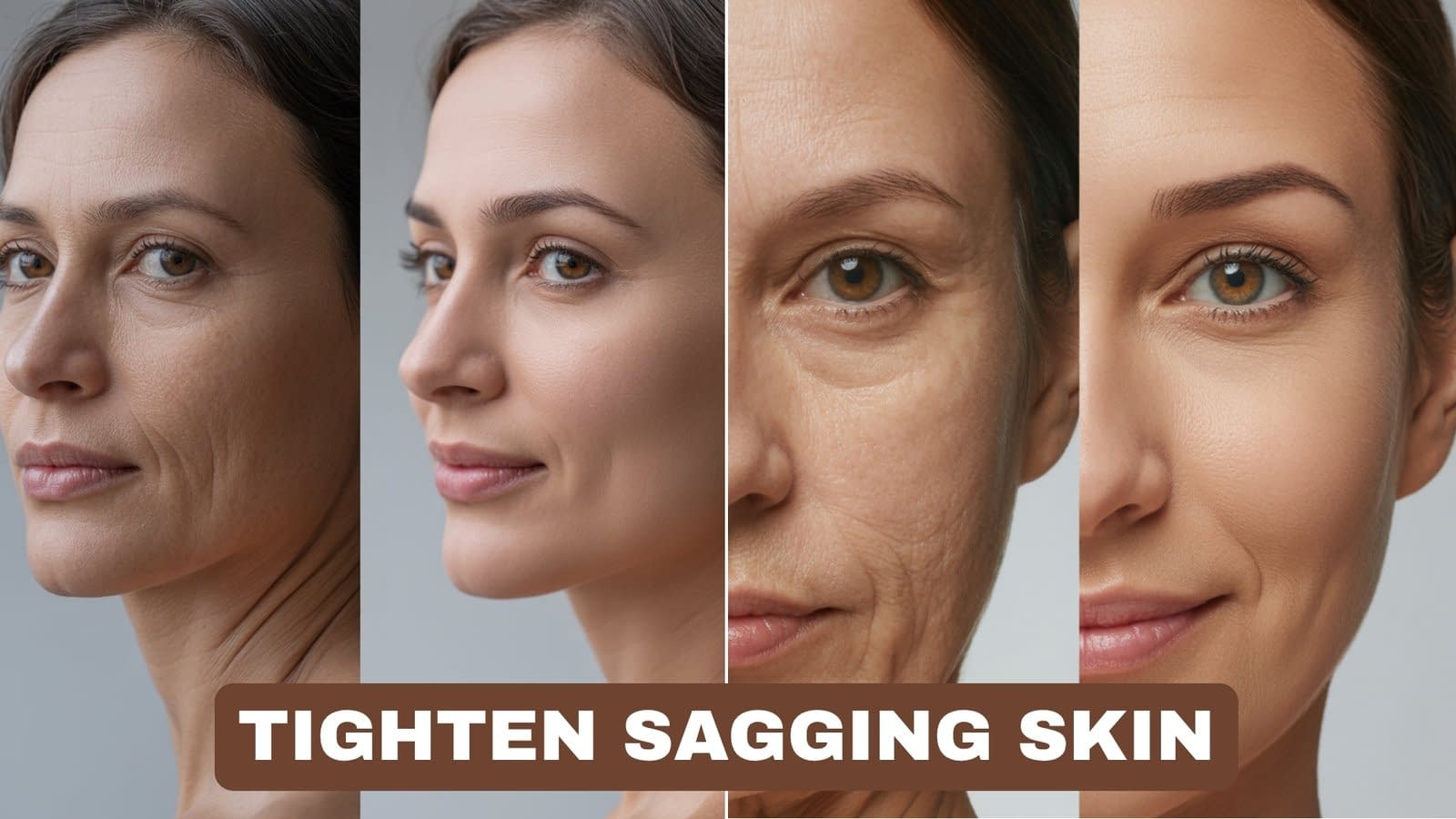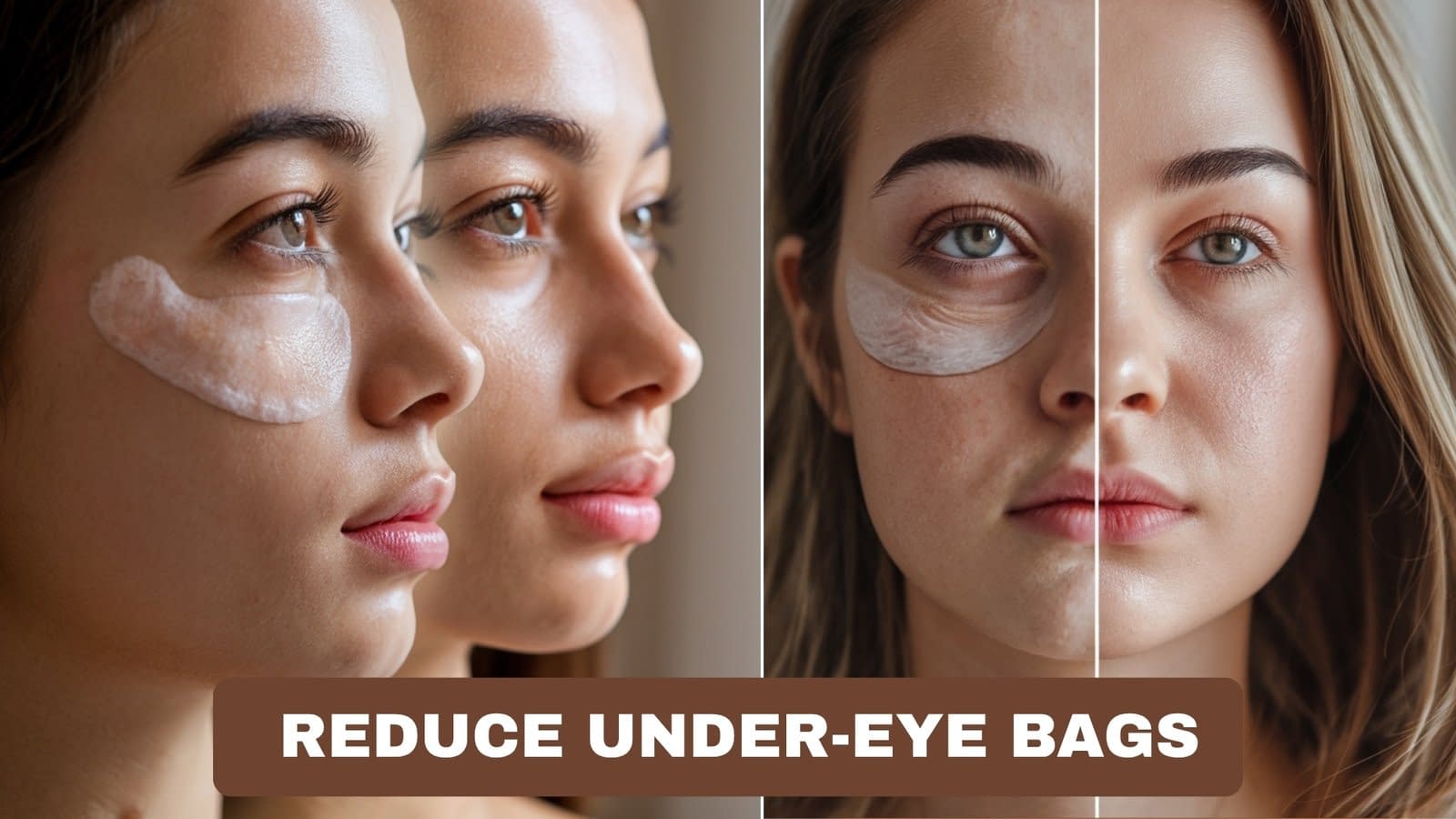Sun-kissed can be lovely — sunburned and patchy tan, not so much. If you’re trying to fade a tan and bring back an even, bright complexion without harsh chemicals or expensive treatments, this guide gives you gentle, practical, science-sensible steps you can start today. You’ll get why a tan happens, daily habits to prevent and reduce it, the best natural brighteners, safe home remedies and masks (with clear step-by-step recipes), how to exfoliate without damaging skin, tips for moisture + repair, real sun protection rules, foods that help from the inside out, and a full tan-fighting skincare routine to follow.
Be patient and consistent: natural approaches are safer and kinder but usually take weeks to months to show noticeable improvement depending on the depth of the tan. If the discoloration persists, looks unusual, or is associated with pain, bleeding, or rapidly changing spots, see a dermatologist.
Understanding Tan: Why It Happens and How It Affects Your Skin

What a tan actually is
A tan is your skin’s defensive response to ultraviolet (UV) light. When UV (from sun or tanning devices) hits skin, melanocytes produce more melanin (the pigment) and distribute it to surrounding cells (keratinocytes). That extra pigment is what darkens the skin — it helps protect DNA in skin cells from UV damage.
Different kinds of pigmentation you might see
- Superficial tan: Even, brownish darkening that sits in the outer layers of the epidermis. Usually fades faster as skin naturally sheds.
- Post-inflammatory hyperpigmentation (PIH): Dark spots left after acne, insect bites, friction, or irritation; can be deeper and longer-lasting.
- Melasma / hormonal pigmentation: Patchy brown areas often triggered by hormones or sun exposure — harder to treat and often needs professional care.
How tanning affects skin health
- Short term: uneven tone, dryness, sensitivity.
- Long term: repeated UV exposure accelerates aging (wrinkles, loss of elasticity) and increases risk of skin cancer. That’s why preventing future UV exposure is crucial while you treat existing tan.
Key takeaway: fading a tan means both removing or lightening existing pigment and preventing new pigment from forming.
Daily Habits That Can Prevent and Reduce Tanning
Small daily changes have big payoff. These are the habits that stop new pigment from forming and speed removal of the old.
- Use sunscreen every single day.
- Broad-spectrum (UVA + UVB), SPF 30 or higher. Apply to face and exposed body every morning and reapply every 2 hours outdoors, or after sweating/swimming.
- Apply enough: don’t skimp — a thin smear gives much less protection than a proper amount.
- Avoid direct sun during peak hours.
- Peak UV is usually 10am–4pm. Seek shade, wear wide-brim hats and UV-blocking clothing (UPF rated when possible).
- Don’t pick or scrub aggressively at tanned skin.
- Picking causes PIH; harsh scrubbing irritates skin and can make pigmentation worse.
- Gentle cleansing and moisturizing.
- Use a gentle cleanser (avoid strong soaps/alkaline washes) and moisturize daily to support barrier repair — a healthy barrier reduces inflammation-driven pigment.
- Introduce actives slowly.
- If using acids (AHA/BHA) or vitamin C, start gradually to avoid irritation that can cause more darkening.
- Patch tests and sunscreen after DIY remedies.
- Some natural brighteners (lemon, vit C) can be photosensitizing — always patch test and always use sunscreen afterwards.
Daily rhythm (simple):
- Morning: cleanse → hydrating toner/essence → antioxidant (vitamin C serum) → moisturizer → sunscreen.
- Evening: cleanse → targeted treatment (gentle AHA, niacinamide) → moisturizer → optional occlusive.
Natural Ingredients That Brighten Skin and Fade Tan

These ingredients have good reputations (and some science) as mild brighteners you can use at home:
- Vitamin C (ascorbic acid or stable derivatives): antioxidant that reduces melanin production and evens tone. Use in the morning under sunscreen.
- Niacinamide (vitamin B3): reduces pigment transfer from melanocytes to keratinocytes and improves barrier function — gentle and well tolerated.
- Licorice extract (glabridin) and kojic-derived compounds: inhibit melanin production; good in serums.
- Aloe vera: soothes, hydrates, and may reduce pigmentation via anti-inflammatory action. Good for post-sun care.
- Turmeric (curcumin): anti-inflammatory and mild brightening; used in short masks (staining caution).
- Green tea extract (EGCG): antioxidant and anti-inflammatory; can help prevent photo-damage.
- Hyaluronic acid: hydrator that plumps and supports repaired skin (not a lightener, but helps skin look brighter).
- Licorice, mulberry, and bearberry extracts: natural tyrosinase inhibitors (tyrosinase is an enzyme in melanin synthesis).
- Mild AHAs (glycolic, lactic) and BHAs (salicylic acid): chemical exfoliants that accelerate removal of pigmented surface cells — use cautiously.
Safety notes:
- Lemon juice / raw vitamin C at high concentration can irritate and sensitize skin; always patch test and don’t leave photosensitizing ingredients on before sun exposure.
- If you have sensitive skin, favor niacinamide, aloe, and gentle lactic acid over stronger acids.
Simple Home Remedies to Remove Tan Quickly (step-by-step)
Here are practical, safe, step-by-step natural remedies you can do at home. Use them 1–3 times per week, not daily (unless specified), and always patch test.
A — Yogurt + Turmeric Brightening Mask
Yogurt contains lactic acid (gentle AHA) and turmeric has anti-inflammatory and brightening properties.
Ingredients
- 2 tbsp plain full-fat yogurt
- ½ tsp turmeric powder
- 1 tsp honey (optional, for extra hydration)
Steps
- Mix ingredients into a smooth paste.
- Cleanse face. Apply mask evenly to tanned areas.
- Leave 10–15 minutes (shorter if you have sensitive skin).
- Rinse with lukewarm water; pat dry; apply moisturizer and sunscreen if daytime.
Frequency: 1–2×/week.
Tip: turmeric can stain — wear an old towel and use minimal turmeric if you’re concerned.
B — Potato Juice Compress (natural mild depigmenter)
Potato is commonly used for lightening due to natural enzymes and mild acids.
Ingredients
- ½ small raw potato, grated or juiced
Steps
- Grate or blend the potato and strain to collect juice.
- Soak cotton pad(s) in juice and apply to tan for 10–15 minutes.
- Rinse and moisturize.
Frequency: 2–3×/week.
Note: Mild, suitable for sensitive skin usually. Avoid if you’re allergic to potatoes.
C — Aloe Vera Gel Soothing & Repairing Treatment
Aloe is safe and excellent for post-sun soothing and reducing coloration from inflammation.
Steps
- Apply pure aloe vera gel (from the plant or store product with minimal additives) directly to tanned areas.
- Leave on — aloe is gentle so you can use it daily or overnight.
- Wash in the morning or leave as is and follow with sunscreen if daytime.
Frequency: Daily until skin calms.
D — Oatmeal + Honey Gentle Cleanse (for body tan)
Oatmeal soothes irritated skin and gently exfoliates when used as a paste.
Ingredients
- 2 tbsp ground oatmeal
- 1 tbsp honey
- A few drops of warm water to form paste
Steps
- Mix to paste. In shower, apply to tanned areas and massage gently in circular motions for 30–60 seconds.
- Rinse; pat dry; apply moisturizer.
Frequency: 2–3×/week — don’t over-scrub.
E — Rice Water Toner (brightening rinse)
Rice water has been traditionally used to improve skin brightness.
Steps
- Rinse ⅓ cup rice, then soak in 1 cup water 30 minutes; strain liquid into a bottle.
- Use chilled as a gentle toner by applying to face with cotton pad. Store refrigerated for up to a week.
Frequency: Daily in the PM or AM after cleansing.
Gentle Exfoliation: Slough Off Tan Without Harming Skin

Exfoliation speeds tan removal by helping the outer pigmented cells slough away — but you must be gentle to avoid further inflammation.
Two safe methods: physical (very gentle) and chemical (controlled)
Physical exfoliation (home scrub) — gentle sugar scrub
Ingredients
- 2 tbsp fine sugar (or jojoba beads if available)
- 1 tbsp olive oil or almond oil
Steps
- Mix to a paste. In shower, apply to damp skin and massage gently for 30–60 seconds in circular motions.
- Rinse thoroughly and moisturize.
Frequency: 1×/week for face (even less if skin is sensitive), 1–2×/week for body. Avoid abrasive scrubs and vigorous scrubbing.
Chemical exfoliation — mild AHA/BHA routine (safer long term)
Why: AHAs (glycolic, lactic) loosen bonds between dead cells; BHAs (salicylic) penetrate oil and help with post-acne PIH.
How to use (step-by-step, conservative approach)
- Choose a mild product intended for at-home use (low concentration AHA or BHA). If you’re new, start with 1x/week.
- Cleanse skin, pat dry. Apply product per manufacturer instructions (usually a few drops or a thin layer).
- Leave on per instructions or until absorbed; follow with moisturizer.
- Always follow up with sunscreen the next morning — exfoliation increases sun sensitivity.
Frequency: Start 1×/week, increase to 2–3×/week as tolerated. Stop if you experience stinging, redness, or excessive peeling.
Important: Never combine strong exfoliants with retinoids or strong vitamin C without professional guidance — layered irritation increases pigmentation risk.
Hydration and Moisturization: The Key to Radiant Skin
Brightness comes from both pigment reduction and good skin health. Hydration plumps the skin and helps conceal and eventually shed pigment.
Core elements
- Humectant — e.g., hyaluronic acid serum applied to damp skin to draw in moisture.
- Emollient — creams containing glycerin, shea butter, squalane or ceramides to smooth skin.
- Occlusive (optional at night) — a thin layer of petrolatum or a sleeping pack to lock moisture in if skin is very dry.
Simple step-by-step AM & PM hydration
- AM: Cleanse → hydrate with a water-based serum (HA) → lightweight moisturizer with ceramides → sunscreen.
- PM: Cleanse → gentle treatment (niacinamide or AHA on alternate nights) → thicker moisturizer → occlusive if needed.
Extra tip: Hyaluronic acid works best on damp skin — spritz toner or water first.
Sun Protection Tips to Avoid Future Tan

This is the single most important step. You can only fade an existing tan while preventing new pigment formation.
Practical sun protection routine
- Use broad-spectrum SPF 30+ every day. Apply at least 15 minutes before sun exposure.
- Apply enough: For face + neck use about a nickel-sized amount; for body use roughly a shot-glass amount for exposed areas. Don’t forget ears and hairline.
- Reapply: Every two hours outdoors, and immediately after swimming or heavy sweating.
- Physical barriers: Hats, UPF clothing, sunglasses, and shade.
- Make sunscreen a cosmetic step: Moisturizers with SPF or tinted sunscreens make compliance easier — but still reapply as needed.
Sunscreen chemistry notes
- If you plan to use chemical brightening acids, physical mineral sunscreen (zinc oxide / titanium dioxide) is often better tolerated right after exfoliation, but use what you like and will reapply.
DIY Brightening Masks You Can Make at Home (recipes + steps)
Below are safe, effective masks. Always do a patch test first. Avoid leaving photosensitizing ingredients (lemon, citrus) on before sun exposure and always follow with sunscreen.
1) Yogurt + Turmeric Mask (detailed again)
- 2 tbsp yogurt + ½ tsp turmeric + 1 tsp honey → mix, apply 10–15 min, rinse.
2) Gram Flour (Besan) + Rosewater Gentle Brightener (South Asian classic)
Ingredients
- 2 tbsp gram flour (besan)
- 1 tbsp plain yogurt or milk
- 1–2 tsp rosewater
- A pinch of turmeric (optional)
Steps
- Combine to a spreadable paste. Apply to face. Let dry 10–15 minutes.
- Gently rub off with lukewarm water in circular motions (mild mechanical exfoliation).
- Rinse and moisturize.
Frequency: 1×/week.
3) Papaya Enzyme Mask (natural enzymatic exfoliant)
Ingredients
- 2–3 tbsp mashed ripe papaya
Steps
- Apply mashed papaya to clean skin for 10 minutes.
- Rinse off. Papaya has papain enzyme that gently removes dead skin.
Frequency: 1×/week. Avoid if you have open wounds or are allergic to papaya.
4) Oat + Milk Soothing Mask
- 2 tbsp ground oats + enough milk to make paste → apply 10–15 minutes, massage gently, rinse. Great for sensitive skin and lightening from inflammation.
Foods and Supplements That Support Skin Brightness
Healthy skin from the inside speeds recovery and supports brightness.
Foods to emphasize
- Vitamin C–rich: citrus fruits, strawberries, bell peppers — important for collagen and antioxidant protection.
- Vitamin E: nuts, seeds, avocado — protects cell membranes.
- Omega-3 fatty acids: fatty fish, flaxseed, chia — reduce inflammation and support barrier.
- Zinc: pumpkin seeds, legumes, meat — helpful for repair, especially after acne.
- Antioxidant-rich foods: green tea, berries, leafy greens — reduce photo-oxidative damage.
Supplements (if diet is insufficient)
- A standard multivitamin with vitamin C, E, zinc may help. Consult your doctor before starting supplements (especially if pregnant, breastfeeding, or on medications). Biotin helps nails/hair but not directly tan.
Hydration
- Drink water consistently — well-hydrated skin reflects light better and looks more luminous.
Creating a Tan-Free Skincare Routine for Lasting Glow (step-by-step weekly plan)

Below is a balanced routine combining brightening, gentle exfoliation, repair and protection. Tailor frequency to your skin’s tolerance.
Daily AM routine (every morning)
- Cleanse — gentle, non-stripping cleanser.
- Antioxidant serum — vitamin C (if tolerated) to protect and brighten. Wait 30–60 sec.
- Hydrating serum — hyaluronic acid on damp skin.
- Moisturizer — light but nourishing (ceramides/glycerin).
- Sunscreen — broad spectrum SPF 30+ (apply liberally).
Daily PM routine (every night)
- Double cleanse if wearing sunscreen/makeup (oil cleanser → gentle cleanser) — otherwise 1x gentle cleanse.
- Treatment — alternate evenings:
- Night A: niacinamide serum (reduces pigment transfer)
- Night B (1–2×/week): AHA or BHA chemical exfoliant (start slow)
- Night C: retinoid only if you’re advanced and can tolerate it (retinoids can help pigmentation but can irritate — consult a pro)
- Moisturizer — richer at night.
- Optional occlusive — if very dry, seal with thin occlusive.
Weekly schedule blueprint
- 1×/week: gentle mechanical exfoliation OR DIY mask like yogurt or gram flour.
- 1–2×/week: chemical exfoliation (AHA/BHA) if your skin tolerates it — not on same nights as retinoid.
- 1–2×/week: hydrating/soothing mask (aloe, oat, rice water) to repair barrier.
- Nightly: niacinamide is safe to use most nights and pairs well with sunscreen.
When to see faster professional options
If natural methods are slow after 3–4 months or the pigmentation is deep (melasma or stubborn PIH), a dermatologist can offer peels, prescription hydroquinone alternatives, laser, or microneedling — these are effective but should be matched to your skin type and administered safely.
Final Notes, Safety & Realistic Expectations
- Patch test everything. Put a small amount of any new ingredient on the inner forearm for 24–48 hours. If irritation or redness occurs, stop.
- Be patient: superficial tan can begin to fade in 2–6 weeks; deeper pigment and PIH may take several months. Consistency wins.
- Avoid over-treating: too much exfoliation, mixing strong actives, or aggressive scrubbing → inflammation → more pigmentation. Start slow.
- If in doubt, see a professional: persistent, unusual, or rapidly changing pigmentation warrants dermatology consult.
Conclusion
Removing tan naturally combines three priorities: stop further UV damage, remove or lighten existing pigmented cells safely, and repair and hydrate the skin so it sheds pigment evenly. Use sun protection every day, add gentle chemical or enzymatic exfoliation (carefully), hydrate and repair the barrier, and use proven brightening ingredients like vitamin C and niacinamide. Support your routine with calming DIY masks and a healthy diet.








